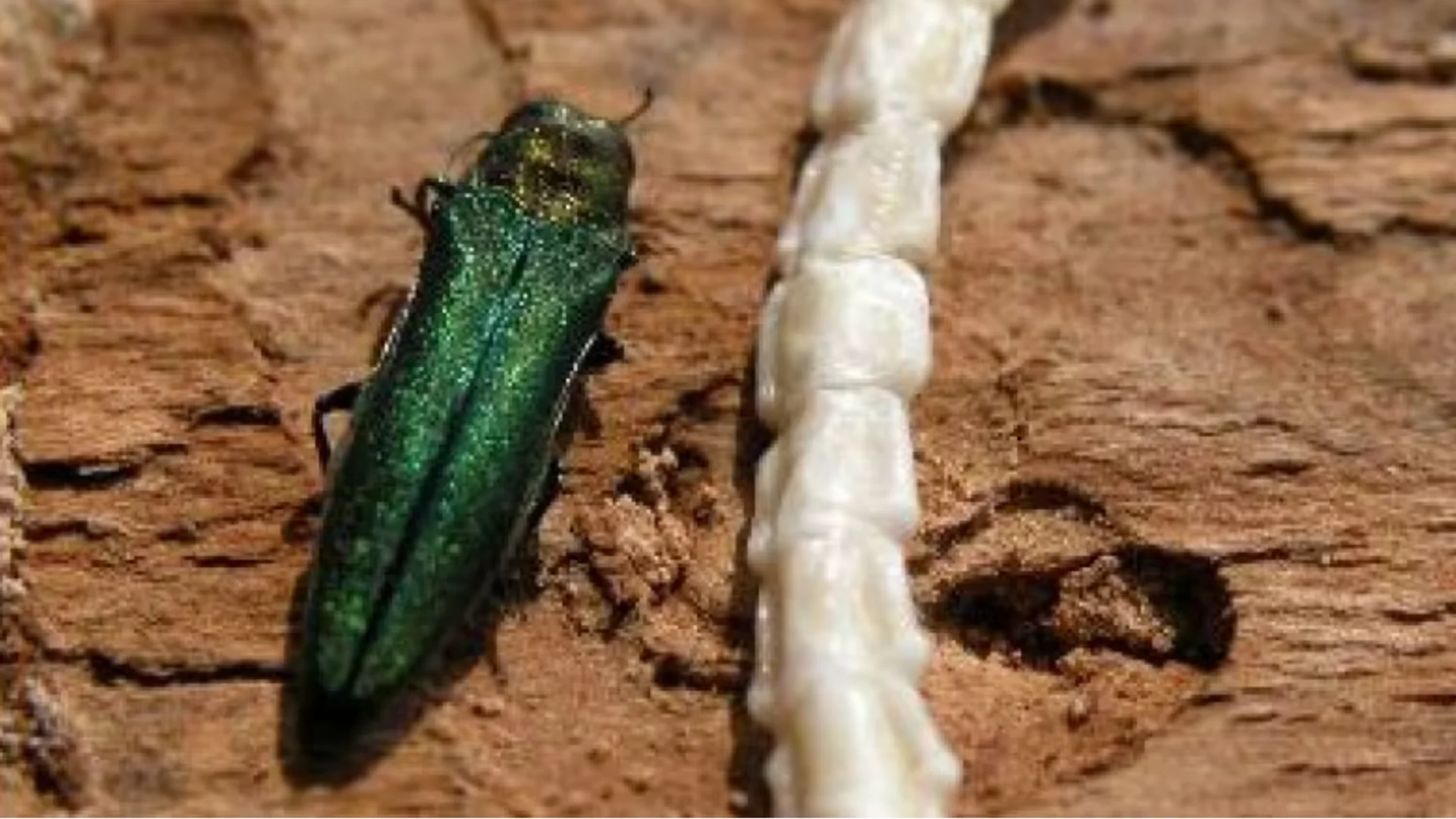
Invasive ash-tree-destroying beetle found in B.C. for 1st time
A highly destructive invasive beetle that kills ash trees has been found in B.C., marking the first time it has been officially recorded in the province.
Larvae of the emerald ash borer (EAB) were recently found in Vancouver by the Canadian Food Inspection Agency (CFIA), indicating that the bug has been on the move into B.C. from other provinces.
Dezene Huber, a professor in the faculty of environment at the University of Northern B.C. in Prince George, says the beetle can spread quickly as a result of human activity.
"The only way this is going to get around and make large jumps is through people moving it around — and firewood is the prime way that that is done," he said.

The emerald ash borer is an invasive beetle that has spread throughout regions of North America. Experts say the beetle is spread primarily through the transportation of firewood. (Government of Ontario)
RELATED: Tropical species are moving closer to Canada as winters warm
The wood-boring, metallic green beetle is about one centimetre in length. On its own, an infestation can only spread 10 kilometres per year from a given point, according to Huber.
"They're actually sort of beautiful-looking, [with] big dark eyes, but they're also an exotic invasive species," he said.
Like many other invasive insects, they arrived in North America through shipping, specifically on untreated wood packing materials such as pallets, crates and spools, Huber said.
"The Canadian and U.S. federal governments both have professionals that do a lot of monitoring, but there's such a massive influx of untreated wood and packing material that it's impossible to keep track of all of it and some invasions are inevitable," he added.
SEE ALSO: The Invasive Species Action Fund helps map, monitor and control invasive species
One of the best ways to help fight the spread of invasive insects is to only use local firewood, and to not transport it between regions, Huber said.
"Don't bring firewood from Vancouver — or any other urban centre for that matter — to places that you're going camping."
Adult female beetles lay eggs in the crevices of ash trees, and when the larvae hatch they bore into the bark, Huber explained. Then, when the larvae mature, they dig further into the tree — beyond the bark — and destroy some of the tissue the tree uses to transport water and nutrients.
"The tree eventually dies over the course of a few years, once it's been attacked by emerald ash borers," Huber said.
According to the CFIA the EAB poses no threat to human health. EAB was first identified in Canada in 2002, and is currently found in six provinces. Huber said it's also been identified in about 35 U.S. states as far west as Colorado and Oregon.
The CFIA has introduced restrictions on the movement of ash wood materials and general firewood out of the affected areas, and it has notified property owners.
Huber says that B.C.'s mountain ash is not susceptible to the beetle, but the urban ash trees in places such as Metro Vancouver, Vancouver Island, and Prince George, which are Oregon ash, are at risk of EAB infestations.
"Most of the ash trees that we have are horticultural urban trees, but those trees give us shade and provide us park space and provide noise abatement … so [the beetle] could move through trees in urban areas," he said.
Anyone who spots an EAB can report it through the CFIA's website.
This article, written by Tessa Vikander, was originally published for CBC News.









